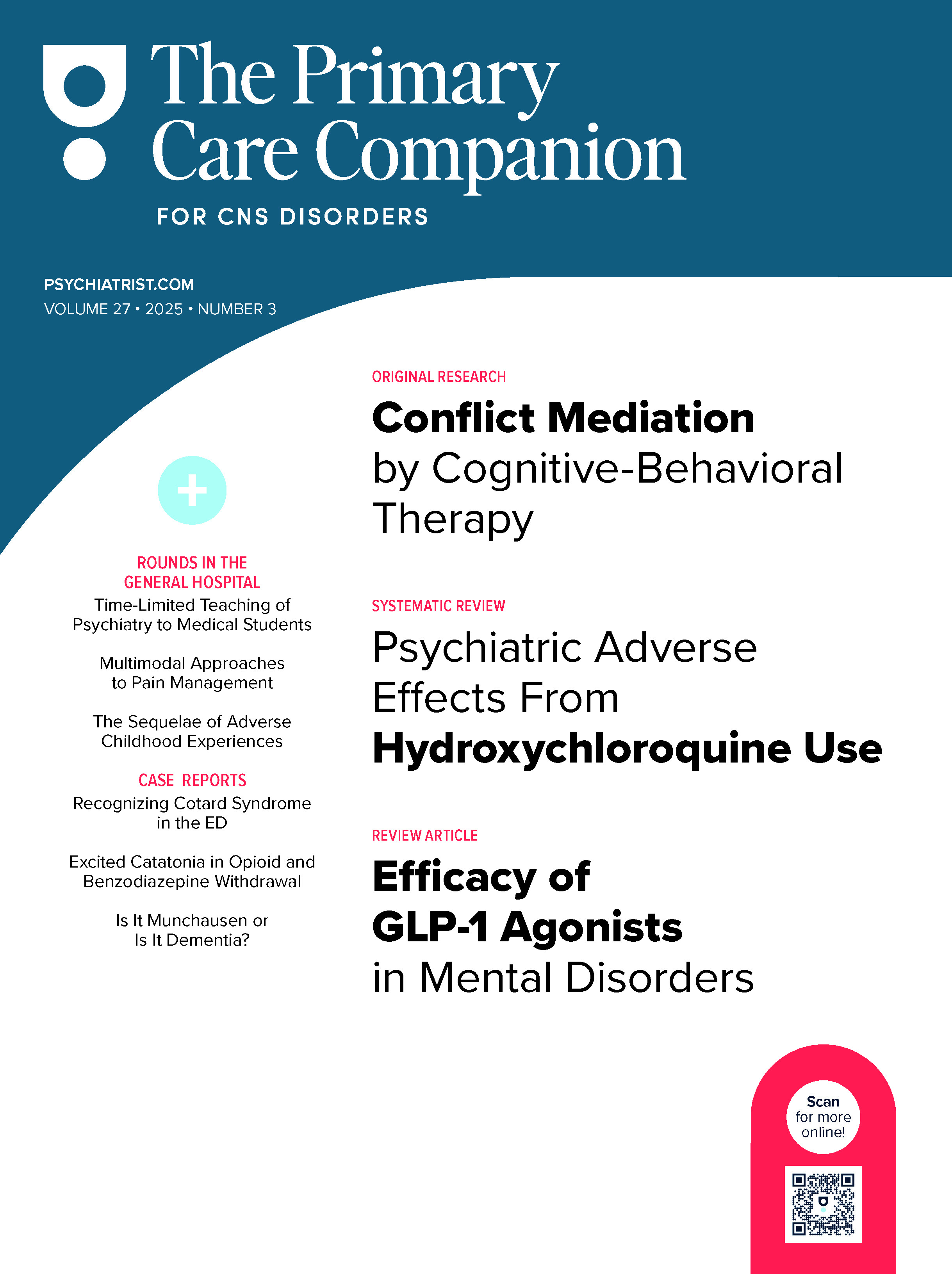Free Access: Please Log In
This content is completely free—but you need to be logged in to read the full article. If you already have an account, please log in below. Otherwise, register for free to unlock instant access.
References (10)

- Yazici KU, Yazici IP. Visual hallucination induced by duloxetine use: a male case diagnosed with generalized anxiety disorder. Psychiatry Clin Psychopharmacol. 2018;28(3):346–348. CrossRef
- Rolma G, Jelcic N, Gnoato F, et al. Combined duloxetine and benzodiazepine-induced visual hallucinations in prodromal dementia with Lewy bodies. Gen Hosp Psychiatry. 2013;35(6):678.e7–678.e9. PubMed CrossRef
- Gündüz N, Eren F, Turan H, et al. Visual and tactil hallucinations after duloxetine use: a case report. Alpha Psychiatry. 2018;19(1):103–105.
- Tomita T, Yasui-Furukori N, Kaneko S. Visual hallucinations during duloxetine treatment in a patient with major depressive disorder. Clin Neuropharmacol. 2013;36(5):175–176. PubMed CrossRef
- Mancini M, Perna G, Rossi A, et al. Use of duloxetine in patients with an anxiety disorder, or with comorbid anxiety and major depressive disorder: a review of the literature. Expert Opin Pharmacother. 2010;11(7):1167–1181. PubMed CrossRef
- Stahl SM, Grady MM, Moret C, et al. SNRIs: their pharmacology, clinical efficacy, and tolerability in comparison with other classes of antidepressants. CNS Spectr. 2005;10(9):732–747. PubMed CrossRef
- Preskorn SH, Greenblatt DJ, Flockhart D, et al. Comparison of duloxetine, escitalopram, and sertraline effects on cytochrome P450 2D6 function in healthy volunteers. J Clin Psychopharmacol. 2007;27(1):28–34. PubMed CrossRef
- Morón JA, Brockington A, Wise RA, et al. Dopamine uptake through the norepinephrine transporter in brain regions with low levels of the dopamine transporter: evidence from knock-out mouse lines. J Neurosci. 2002;22(2):389–395. PubMed CrossRef
- Stahl SM. Neurotransmission of cognition, part 3: mechanism of action of selective NRIs: both dopamine and norepinephrine increase in prefrontal cortex. J Clin Psychiatry. 2003;64(3):230–231. PubMed
- Cancelli I, Marcon G, Balestrieri M. Factors associated with complex visual hallucinations during antidepressant treatment. Hum Psychopharmacol. 2004;19(8):577–584. PubMed CrossRef
Please sign in or purchase this PDF for $40.




